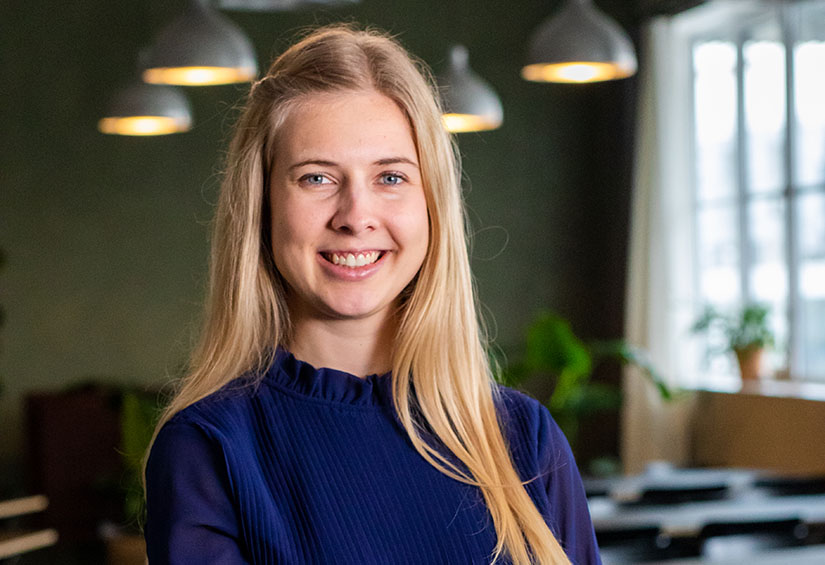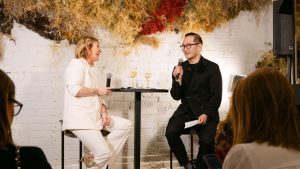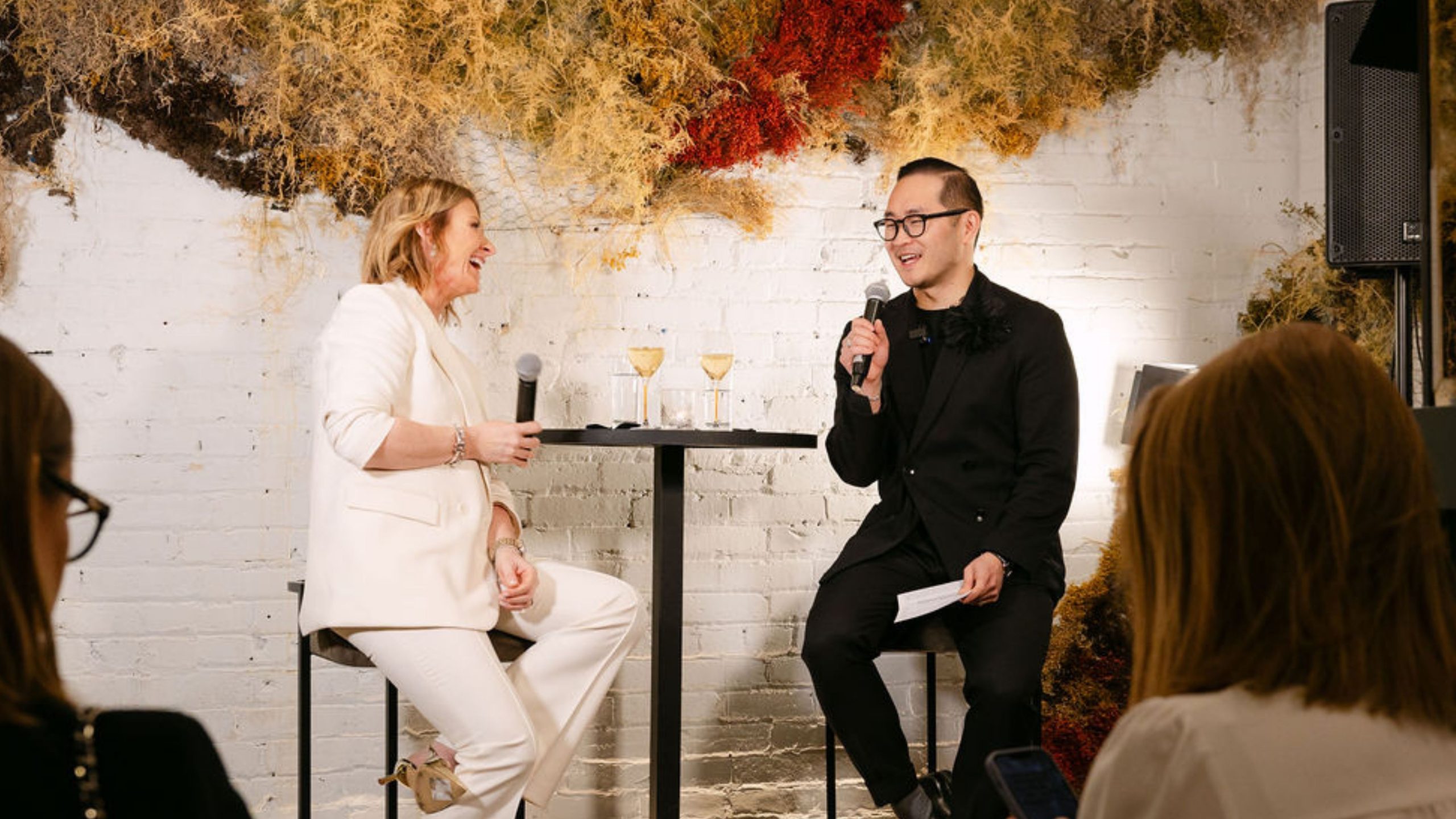[vc_row][vc_column][vc_column_text] Anna-Sophie Hartvigsen and her team of dedicated women have developed Female Invest, the largest financial educator for women, with a focused on closing the financial literacy gap.
[vc_separator]
Despite the fact that women are proven to be more successful investors and savers than men, Wall Street and other financial hubs around the world remain synonymous with their male dominated environments.
With numerous reports highlighting the positive impact women entering the financial market would have on the economy, the question remains: why is female representation in the investment market so minimal?
This question has influenced Anna-Sophie Hartvigsen’s life since university. After spending her early life saving, she realized that her money was losing value sitting in her savings account. It wasn’t until Hartvigsen went to a party and met a mutual friend who had been investing for a few short years that she caught the investing bug. One long conversation, some key investing tips and a suggested trading platform later, Hartvigsen started her journey as a young female investor.
Targeting women does not mean that we teach on a lower level but rather that we communicate differently.
As Hartvigsen continued down the rabbit hole however, she noticed that the investing market was missing two major components; gender diversity and easy access to education. It was this realization that inspired Female Invest, an online educational platform dedicated to closing the gender investment gap.
“We educate women through an online subscription platform, where members get access to video courses, webinars and a written knowledge bank,” said Hartvigsen, “our goal is to teach our members how to become the boss of their money and get started investing in a fun and easy way.”
Earlier this year, Hartvigsen received an award of excellence as a recipient of the Cartier Women’s Initiative. Since 2006, the initiative has been driving change by empowering women entrepreneurs who are making an impact in their respective fields.
[/vc_column_text][/vc_column][/vc_row][vc_row][vc_column][vc_video link=”https://www.youtube.com/watch?v=RON1AqyUs08#action=share” src=”“https://www.youtube.com/embed/RON1AqyUs08“” width=”“560“” height=”“315“” frameborder=”“0“” title=”Cartier Women’s Initiative “][vc_column_text]
For Hartvigsen, the recognition among the women featured is an honour.
“Winning the Cartier Women’s Initiative is a great honor. The other female entrepreneurs are absolutely amazing, so I also feel very humbled,” said Hartvigsen.
In the latest addition to Bay Street Bull’s Women Who Lead series, we spoke with Anna-Sophie Hartvigsen about the future of female investing, how to improve women’s financial literacy and what is next for Female Invest.
[vc_column][vc_text_separator title=”Q & A “]
Female financial literacy has been an up-hill battle for years. What systems do you believe need to be changed to improve the statistics?
The financial industry is heavily dominated by men, which is reflected in every aspect of if: From the behavior in corporate life to the communication style and product offerings I banks. Due to the massive underrepresentation of women at higher levels in the financial industry, the competencies to understand and target the female segment is currently not present. While the focus on this issue has increased in recent years, the share of women at the top has not changed significantly. As a result, female banking customers remain one of the largest underserved segments in the world.
Until the representation of women at higher levels in the industry changes, the stereotypes around women and money will prevail, ultimately keeping women from taking charge of their personal finances and getting started investing.
Young entrepreneurs get a lot of flack for being not ‘experienced enough’. Young female entrepreneurs receive even more. How do you navigate doubt and lack of trust in business relationships and partnership situations?
When my Co-Founders and I started Female Invest, we were in our early 20s. When working in the financial industry, we therefore often struggled to be taken seriously.
We initially tried to mitigate this challenge by being very conscious of how we dressed and carried ourselves. However, as our main target group are “normal” women, we quickly realized that we were not dependent on the bank’s understanding of our worth and that our true strength lies in the fact that we are young and represent our own target group. Once we realized that, we started growing exponentially. As we hit more and more milestones (e.g. wrote a bestselling book on investing, helped more than 25,000 women getting started investing, got listed on the Forbes 30 under 30 list etc.), we were taken much more seriously. Therefore, staying true to ourselves and what we represent has fuelled our growth despite people outside of our target group having doubts.
What do you believe is the biggest reason that women continue to struggle with investing and finance?
When talking about women and investing, it is important to first get the facts straight. Even though women are underrepresented in financial markets, they are very talented once they get started investing. In fact, female investors achieve higher average returns than male investors. While it is not a competition between the genders, this is still an important fact as women are often portrayed as less knowledgeable on the area.
Drawing upon these facts, the lack of women in financial markets appear to be rooted in a lack of targeted offers and role models rather than a lack of skills and interest.
Investing can feel difficult and intimidating, what advice would you give women who are eager to get involved?
Investing is actually very simple to get started with. You don’t need a lot of money, knowledge and experience to make money in the stock market. The reason is, that the stock market has historically always increased in the long run, with an average increase of 8% per year. Therefore, you just need to buy something that reflects the average market – e.g. an investment fund covering the world market. While investing always comes with a risk, this has historically always been a good idea.
Based on those facts, I have 3 steps on how to get started:
- Call your bank and create a trading account
- Buy something that reflects the market average, e.g. an investment fund covering the world market
- Wait
How can we increase women’s visibility in finance? Where should the teaching of financial literacy start?
The first step is to increase the representation of women at higher levels in the financial industry. Until the competencies to fully understand the female segment is present, real change is unlikely to happen.
Thereafter, the stereotypes around women and money must be changed along with how the topic is communicated to women. Extensive research on the topic has found that there are significant linguistic differences in the way banks communicate to men and women. Whereas women are often being portrayed as “spenders” and advised to save up their money, men are generally being portrayed as knowledgeable and advised to invest.
What is your 5 year goal? Do you plan on expanding Female Invest to other parts of the world?
As our learning platform is already available in English, we now have members in 37 countries, including lots from Canada and the U.S. Going forward, we want to reach more women in more countries. As financial gender inequality is a problem in every single country in the world, the market potential appears to be rather big.
How do you measure success?
We work to create financial gender equality and our goal is to financially empower women. We measure success in how many women we help – and that is our motivation for going to work every day.[/vc_column_text][/vc_column][/vc_row]













